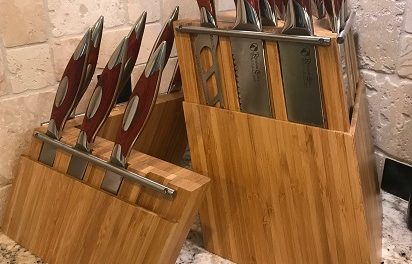Confused about spices? Me too!
When I thought of writing this article, I wanted to list the spices, herbs and seasonings by cuisine. This was a struggle as I found so many crossovers. A lot of cuisines use the same ingredients!
Today I was reading A Kitchen in Persia by Umm Maryan. I connected with the author 4 years ago and she hooked me up with some recipes from about 5 cuisines. It was before I adopted my WFPB lifestyle so her book went to the wayside in favor of WFPB books.
While reading through her book, I noticed a Persian beverage was simply lemonade, an Egyptian salad was something I make all the time to go on my tacos. What I also noticed was a large number of her recipes were WFPB. It inspired my enough to make a Mediterranean lunch and give thought to this article!
Frankly I make a lot of dishes that I can’t say what cuisine it really is. I might have Turkish, Lebanese, Indian, Greek, Egyptian and African dishes all in the same meal! Technically I can’t call them all Mediterranean, Indian or African but many of them share the same spice blends.
How many of those regions have Hummus? America adopted hummus and changes it by region. We have Cajun, Tex Mex, basil pesto hummus, rainbow hummus, red pepper hummus – all with different spice variations.
What distinguishes one cuisine from another?
It is the local ingredients, not so much the spices. Just watch Gordon Ramsey’s Uncharted series to see what people eat around the world. Although we have imports and exports of more common foods, there are countless foods that are not. I tried to grow my own lemongrass to no avail. Luckily I can buy it locally as it is imported and I managed to find lemongrass oil! My Gochu Mary cocktail has Thai lemongrass and Korean Gochuchang but I could only call it Asian fusion.
Herbs are regional as well. I use Mexican, Greek and Italian varieties because that is all that is available to me, but there are at least 100 varieties of oregano. With most herbs, there are many varieties, all with subtle difference. Five varieties of mint and three types of basil grow in my garden right now! (Try seeping some chocolate mint for a refreshing tea!).
Perhaps it is simply who publishes the recipe and where they are from that makes the cuisine! But French fries did not originate in France, tacos did not originate in Mexico and Pizza in the USA is nothing like Italian pizza.
What is the difference between Thai, Korean, Taiwan, Japanese, Chinese or Indonesian? As far as spices go, not so much.
Spice blends make the cuisine!
Certainly each country and region may have dishes they are famous for. However, it is a lot like curry. We have Thai, Indian, African, Moroccan, Jamaican and Chinese curries. Did I leave anybody out? They are all different countries but within each country, every cook has their own version.
Herbe De Provence is an herb blend I use all the time. Before Herbe De Provence, I was using Italian seasoning thinking it the same. It could be. When I could not find my regular Herbe De Provence blend I discovered that every spice manufacturer has a different recipe!
Maybe the intensity of the spice? Indian recipes call for multiple spices in large amounts. When I hear Food Network judges say the word bold, they refer to the intensity, not necessarily the heat.
Let’s face it. There are only so many varieties of vegetables, fruits and herbs.
Spice is what gives them life! Spice combinations are what makes them regional. How the spices and herbs are applied makes the cuisine!
Do you have Spice Fear?
People seem to be afraid of spices. Some see a bunch of spices listed on a recipe and close the book! Me, I am always on the lookout for new flavor combinations. I probably have 200 individual spices in my kitchen! Pepper alone accounts for 50 or so.
Outside of Sichuan pepper and Urfa Biber which are notably unique, the differences are otherwise subtle. The differences between most peppers is the degree of heat or fruitiness and how they are dried or smoked. Is a Tellicherry peppercorn that much different than a black peppercorn?
I find a big difference between globe and Thai basil but hardly any between curly and flat leaf parsley.
Spices are universal!
What I have learned is that no one cuisine can claim a spice to be their own, well with a few exceptions! Aleppo pepper, Calabrian chile, Sichuan pepper, Ceylon cinnamon, Hatch chile are all regional…like wines. Well, they may come from only one region but they can be used in all cuisines.
In some cases a spice (or pepper) goes by several names depending on where they are grown. Hatch chili foe example may be called Anaheim. Personally I think a Fresno chili is a red jalapeño grown in California. A Scotch Bonnet and habanero are interchangeable with the same scorching heat.
Explore by trying different blends!
My Spice Sage has over 600 spices and blends. They offer a free sample with each purchase. They gave me the opportunity to try new things and a place to go for blends I really liked! I love their tandoori, baharat, berbere and Thai spice blends and use them frequently.
Amazon has spice blends from around the world. Use a blend with no other seasoning to get a taste for a particular cuisine. If you like it, try the individual spices listed on the blend. You might find there is one spice that makes it (or kills it) for you.
I LOVE exotic blends but I absolutely hate Chinese Five Spice and Garam Masala. Interesting but I don’t hate the individual spices in these blends. The ones I tried might be heavy in star anise which like nutmeg should be used sparingly. I find the amount of lavender dictates how much I like an Herbe De Province.
Just be aware that a lot of blends use table salt as the first ingredient. You want to learn flavors with them but start blending your own to control the level of salt, sugar and unwanted additives like MSG.
Have time and still spice it up!
Learn to “eye ball” your spices. I use scant amounts of nutmeg, cardamom, allspice and clove but more generous amounts of garlic, onion, cumin and chili powders. Dried herbs fall somewhere in between.
Once you make recipes to your satisfaction and get a feel for your spices, you don’t have to measure everything! Saves time!
If you find yourself using the same seasonings repeatedly, make a blend to save you time. It takes me a couple minutes to season my Mexican food but I created a Mexican Spice blend for my husband to save him time.
What is the right amount?
The age of the spice or dried herb is a HUGE factor in how much to use. Whether or not you roast your spices to bring out the oils or start with whole spices and grind them make a big difference as well. It’s one reason why I hesitate to add measurements on my recipes.
One of my signature dishes was jerk chicken. I had my recipe finely honed then bought all new organic spices. When I made a batch of jerk sauce with the new spices, it was barely edible! I had to add four times the amount of the vegetables and fruits in the sauce to balance out the spice!
Try my Jamaican jerk sauce on cauliflower or make my Jerk Jackfruit Sliders.
My point it, you don’t have to go all exotic. Once you know what each spice tastes like, you can adjust and add more. Always start with small amounts and build.
Likely you will find yourself using the same spices over and over, perhaps just blending them differently. Until I found Calabrian chili, I was putting ancho chili and red pepper flakes in my Italian spaghetti sauce. (Sorry Giada).
Have fun and experiment in the kitchen! You will find it to be very rewarding as it can take your meals in many different directions.





